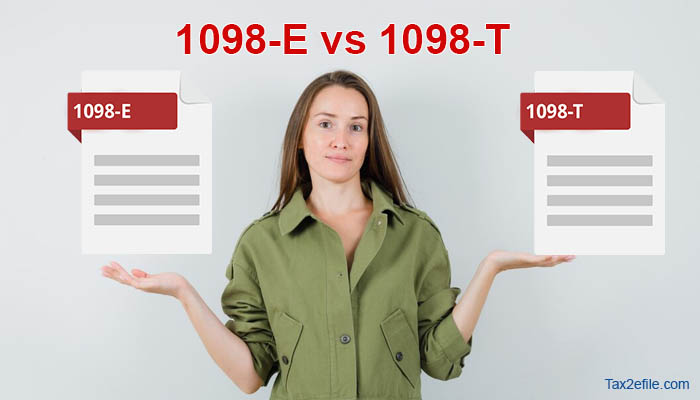- February 3, 2023

Students who have paid $600 or more as interest on their student loan during the tax year will get IRS Form 1098-E. Form 1098-T reports scholarships, tuition, grants, and other qualified educational expenses paid on the student loan. Both these Forms belong to information return Tax Forms.
What is Form 1098-E?
This 1098-E Form is used to report the interest that the taxpayer on competent student loans pays. This loan interest can be deducted on the federal tax returns, and receiving Form 1098-E doesn’t always mean that the taxpayer is eligible for deductions. However, if the taxpayer qualifies, they can deduct the interest paid from the overall income, thus reducing the federal income tax they owe.
As Form 1098-E records the amount of interest the taxpayer has paid on the student loan, this information is crucial. With this Form, it is possible to claim tax deductions for loan interest payments. Tax Payers can claim up to $2500 in interest deduction if the student loan is their name and if they meet the income eligibility criteria.
What is Form 1098-T?
This IRS tax form is used to report tuition and other related fees during the tax year. This Form 1098-T is also used to report scholarships and grants that might diminish the allowable credits and deductions for the taxpayer.
Eligible educational institutions will send Form 1098-T to the students who have paid their qualified educational expenses in the previous tax year. The qualified expenses include tuition fees, enrollment fees, fees paid toward course materials, etc.
Differences Between Form 1098-E and Form 1098-T
Depending on the education situation of the student, they might receive both 1098-E vs 1098-T tax Forms in the mail. It is thus important to stay acquainted with the differences between these two tax Forms.
- Form 1098-E is used to report the interest that the taxpayer paid on the student loan during the tax year. Form 1098-T, however, tells how much is paid as tuition fees for post-secondary education.
- The institution that transmits the educational loan for the students will send a copy of Form 1098-E by January if they have paid at least $600 or less. Schools should provide 1098-T to all students who have paid tuition fees or related expenses by January 31, after the year in which the payments were made.
- The account number is mandatory if the taxpayer has multiple accounts for a beneficiary to whom they are filing more than one Form. This applies to both tax Forms.
The IRS information returns tax Form 1098-E is used to report student loan interest statements. The Form reports the interest that the taxpayer has paid on the student loans. Form 1098-T corresponds to the tuition statement and reports the payment paid or billed for qualified tuition and relevant expenses. The taxpayer can use this Form to attempt modification to the tax credits. To learn more about these tax Forms and to get expert help in filing both 1098-E and 1098-T tax Forms with the IRS well within the deadline, contact expert tax filing service provider Tax2efile.


